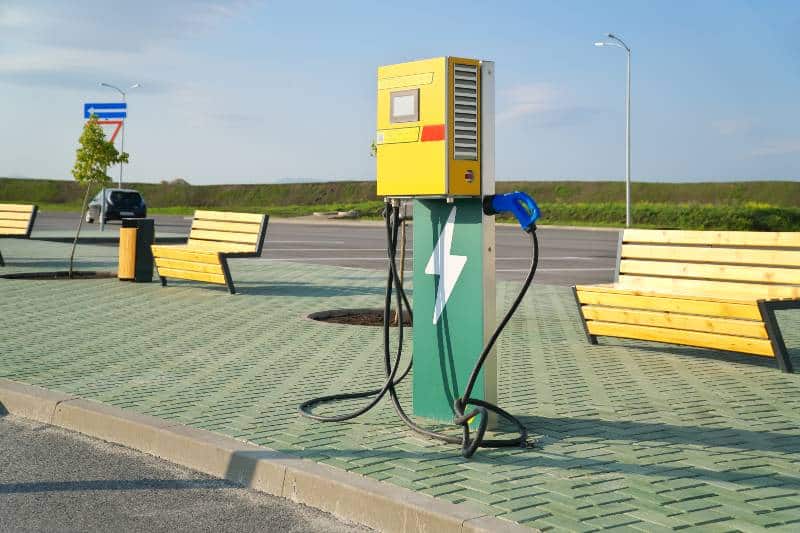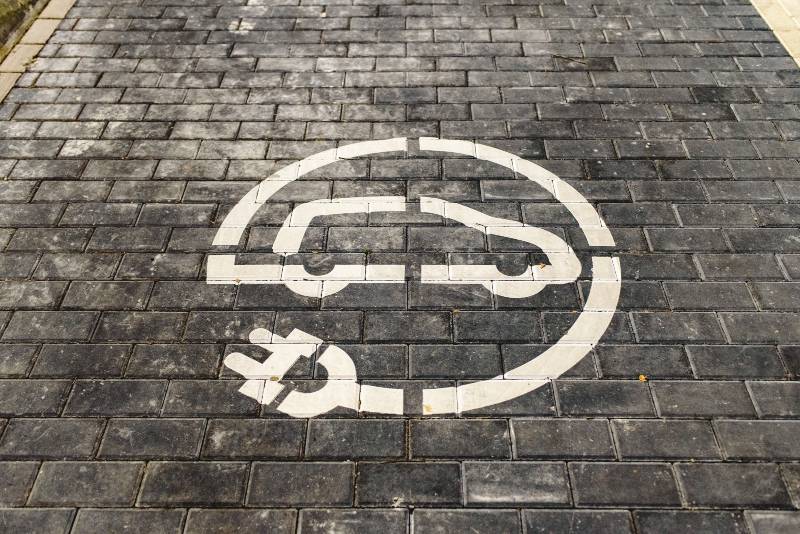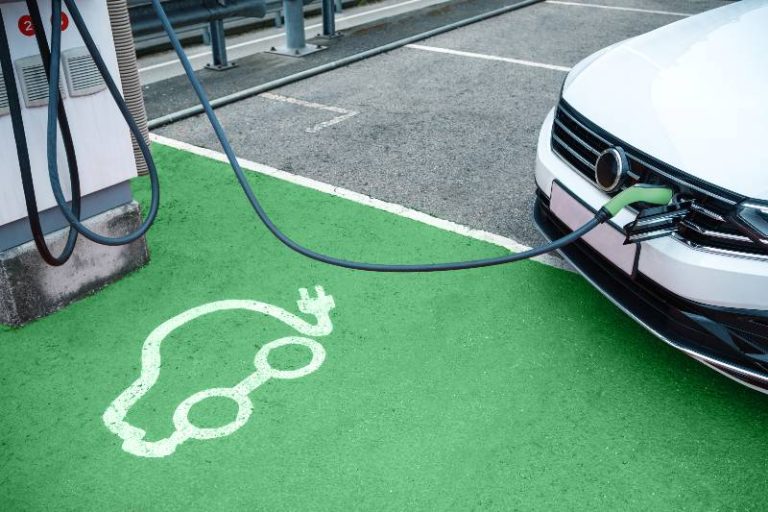EVs on the Rise: The Disruption of the Auto Industry
Electric vehicles are rapidly changing the face of the auto industry in a number of ways. Far from being just an environmentally friendly option, electric cars are introducing a whole new array of possibilities to how people get around and enjoy their daily commutes. As well as decreasing emissions, electric vehicles offer distinct advantages for drivers when it comes to upgrades in performance and convenience. In this blog post, we’ll explore the different ways that electric cars are disrupting the auto industry and what that could mean for you!
Exploring the environmental impact, technological advancements, and industry disruptions caused by the rise of electric vehicles. Discover the changing dynamics of the automotive landscape and the implications for the future.

Key Takeaways
- By using electric vehicles, we can reduce greenhouse gas emissions and air pollution, which helps to protect the environment. Furthermore, electric vehicles support the integration of renewable energy sources, leading to a more sustainable future.
- The battery technology in electric vehicles has significantly improved, which has addressed concerns such as range anxiety. These vehicles also have better acceleration and torque, so the driving experience is more exciting.
- The auto industry is being disrupted by electric vehicles, which is causing changes in manufacturing, supply chains, and competitiveness. To remain relevant in the changing market, traditional automakers are investing in electric vehicle production and devising strategies to adapt.
Environmental Impact of Electric Vehicles
Reduction in greenhouse gas emissions
Electric vehicles (EVs) have emerged as a promising solution to mitigate the environmental impact of transportation. One significant benefit of EVs is the reduction in greenhouse gas (GHG) emissions compared to conventional gasoline-powered vehicles. EVs produce zero tailpipe emissions since they run on electricity, which can be generated from renewable sources such as solar or wind power.
By shifting from fossil fuel-based transportation to EVs, the transportation sector can significantly reduce its carbon footprint and contribute to the overall global efforts to combat climate change. The adoption of EVs plays a crucial role in decarbonizing the transportation sector and achieving sustainability goals by curbing GHG emissions and improving air quality in urban areas.
Decreased air pollution
Electric vehicles (EVs) have a significant positive environmental impact by contributing to decreased air pollution. Unlike traditional internal combustion engine vehicles that emit pollutants like nitrogen oxides, carbon monoxide, and particulate matter, EVs produce zero tailpipe emissions. By replacing conventional vehicles with EVs, we can reduce the release of harmful pollutants into the atmosphere, leading to improved air quality and reduced health risks associated with air pollution.
This shift towards electric transportation helps mitigate climate change, as EVs produce lower carbon dioxide emissions, especially if the electricity used for charging comes from renewable energy sources.
Renewable energy integration
Renewable energy integration plays a crucial role in mitigating the environmental impact of electric vehicles (EVs). By coupling EVs with renewable energy sources such as solar and wind power, we can significantly reduce greenhouse gas emissions and dependence on fossil fuels.
The integration allows for the charging infrastructure to be powered by clean energy, ensuring that the electricity used to charge EVs is generated from sustainable sources. This synergy between renewable energy and EVs promotes a more sustainable transportation system, contributing to lower carbon emissions, improved air quality, and reduced environmental degradation.
Technological Advancements and Performance
Improved battery technology
Improved battery technology has been a game-changer for the electric vehicle (EV) industry. With advancements in battery technology, EVs are now able to achieve longer driving ranges and faster charging times. The development of lithium-ion batteries, in particular, has significantly enhanced the efficiency and performance of EVs. These batteries offer higher energy densities, allowing for more energy storage in a compact and lightweight design. Moreover, research and development efforts have focused on improving the lifespan and durability of batteries, addressing concerns about their degradation over time.
Range anxiety and charging infrastructure
In recent years, there have been significant technological advancements in electric vehicles (EVs), addressing key concerns such as range anxiety and charging infrastructure. Range anxiety refers to the fear of running out of battery power while driving, limiting the overall adoption of EVs. However, improvements in battery technology have resulted in longer driving ranges for electric vehicles. With the development of high-capacity lithium-ion batteries, EVs can now travel extended distances on a single charge, alleviating range anxiety for many drivers.
Furthermore, the charging infrastructure for EVs has expanded rapidly, providing more convenience and accessibility. Governments, businesses, and charging networks have invested heavily in the installation of public charging stations, both in urban areas and along highways.
Acceleration and torque advantages
Electric motors deliver instant torque, providing seamless and powerful acceleration right from the moment you press the accelerator pedal. This attribute gives EVs an edge over traditional internal combustion engine vehicles, which often require a ramp-up time to reach peak torque. Furthermore, EVs can achieve impressive acceleration due to the ability to deliver maximum torque at low speeds, resulting in quick and responsive performance.
These technological advancements have transformed the driving experience, offering drivers exhilarating acceleration and a smooth, uninterrupted flow of power, making electric vehicles an attractive choice for those seeking high-performance and efficient transportation options.
Cost and Economic Considerations
Long-term cost savings
Electric vehicles (EVs) offer several long-term cost savings compared to traditional internal combustion engine (ICE) vehicles. Firstly, EVs have significantly lower operating costs due to their higher energy efficiency and lower fuel costs. Electricity prices are generally more stable and predictable than gasoline prices, reducing the uncertainty of future fuel expenses. Additionally, EVs have fewer moving parts and require less maintenance, resulting in lower maintenance and repair costs over the vehicle’s lifetime.
Government incentives and subsidies
Government incentives and subsidies for electric vehicles (EVs) are driven by cost and economic considerations. While the initial purchase price of EVs may be higher than that of traditional internal combustion engine vehicles, government incentives aim to bridge this affordability gap. By providing financial support, such as tax credits, rebates, and grants, governments encourage consumers to adopt EVs and help offset the higher upfront costs. These incentives also contribute to the growth of the EV market, leading to economies of scale in production and potential cost reductions over time.
Disruption to the oil industry
As more consumers adopt EVs, the demand for gasoline and traditional internal combustion engine vehicles is expected to decline, leading to reduced oil consumption. This shift poses a challenge for oil companies, as they may experience decreased revenues and potential disruptions to their business models. Additionally, EVs are typically more energy-efficient and require less maintenance compared to conventional vehicles, which can further impact the oil industry’s profitability.
To adapt to this changing landscape, oil companies are exploring alternative business strategies, such as diversifying into renewable energy sources or investing in EV charging infrastructure, to remain competitive in a world where electric mobility is gaining prominence.
Impact on Traditional Automakers
The shift in manufacturing and supply chains
The shift in manufacturing and supply chains has had a significant impact on traditional automakers in the electric vehicle (EV) industry. With the rise in demand for EVs, automakers have had to adapt their manufacturing processes to accommodate the unique requirements of electric vehicles. This shift has involved integrating new technologies, such as battery production and electric drivetrains, into their assembly lines.
Additionally, traditional automakers have faced challenges in securing a stable and efficient supply chain for EV components, as the demand for batteries and other key parts has soared. This has required partnerships and collaborations with battery manufacturers and other suppliers, as well as the establishment of new supply chain networks.
Competition from new players
With the rise of innovative startups and tech giants entering the EV space, established automakers are facing intensified competition and a need to adapt quickly. These new players often bring fresh perspectives, advanced technologies, and streamlined production processes, posing challenges to traditional automakers’ market share and profitability.
To stay competitive, traditional automakers have been forced to invest heavily in EV research and development, manufacturing infrastructure, and charging network expansion. This heightened competition has accelerated innovation, leading to improved EV offerings, expanded product ranges, and more affordable options for consumers.
Additionally, traditional automakers have been prompted to enhance their sustainability initiatives and transition towards electric mobility, aligning with the growing demand for eco-friendly transportation. While competition from new players has disrupted the status quo, it has also spurred positive changes, ultimately benefiting consumers and driving the advancement of the EV industry as a whole.
Adaptation strategies of traditional automakers
Traditional automakers are employing various adaptation strategies to keep up with the evolving automotive landscape. One strategy involves monetizing data generated by vehicles through connected technologies, enabling them to gather valuable insights and offer data-driven services. Additionally, they are embracing the concept of Robo-Taxis and Mobility as a Service (MaaS), where autonomous vehicles are utilized for ride-sharing purposes, providing an alternative to traditional car ownership.
Leveraging blockchain technology, automakers can enhance data security, streamline transactions, and enable secure vehicle-to-vehicle communication. They are also entering the insurance sector by offering usage-based policies, utilizing data to personalize premiums and improve risk assessment.
Furthermore, traditional automakers are establishing online sales platforms to cater to the growing demand for digital car purchasing experiences. These adaptations reflect their efforts to stay competitive and capitalize on emerging trends in the automotive industry.
Disruption in the Auto Service Industry
Maintenance and repair differences
Unlike traditional internal combustion engine (ICE) vehicles, EVs have fewer moving parts, resulting in reduced maintenance needs. They do not require oil changes, spark plug replacements, or transmission repairs. Instead, EVs focus more on battery management, ensuring optimal charging and performance. Additionally, the regenerative braking systems in EVs help extend brake life. However, servicing EVs requires specialized knowledge and equipment to handle high-voltage systems safely.
As a result, technicians need to acquire new skills and training to diagnose and repair EV-specific issues. Overall, the emergence of EVs disrupts the auto service industry by shifting the focus from mechanical repairs to electrical and battery-related maintenance, necessitating a new set of expertise and tools.
Job market shifts
With the rise of EVs, there has been a growing demand for professionals skilled in electric vehicle technology, such as electric vehicle technicians and engineers specializing in EV systems. These individuals are needed to maintain, diagnose, and repair electric vehicle components and charging infrastructure. On the other hand, traditional auto service jobs related to internal combustion engines, such as mechanics specialized in gasoline-powered vehicles, may experience a decline in demand. However, new opportunities emerge as EVs require a different set of skills, including battery maintenance and software diagnostics.
Implications for Energy Grids and Infrastructure
Increased demand for electricity
The implications for energy grids and infrastructure due to increased demand for electricity are significant. As the demand for electricity rises, energy grids, and infrastructure must be adequately equipped to meet the growing needs of consumers and businesses.
One of the immediate challenges is ensuring that the energy grid can handle the increased load. Higher demand requires a more robust transmission and distribution network capable of efficiently delivering electricity to various regions. This may involve upgrading existing infrastructure, constructing new power lines, and implementing advanced technologies to enhance grid stability and reliability.
Furthermore, accommodating the increased demand for electricity necessitates the expansion and diversification of power generation capacity. This could involve the construction of additional power plants, both conventional and renewable, to meet the growing energy needs. Investments in renewable energy sources such as solar, wind and hydroelectric power become increasingly important to ensure a sustainable and environmentally friendly energy mix.
The integration of distributed energy resources also becomes crucial in managing the increased demand. Distributed generation, including rooftop solar panels and local wind turbines, allows for more localized power production, reducing strain on the centralized grid. Smart grid technologies, such as advanced metering systems and demand response programs, can help optimize energy consumption and balance supply and demand.
Moreover, the increased demand for electricity calls for improvements in energy storage technologies. Energy storage systems, such as batteries, can help address fluctuations in demand and supply, enhancing grid stability and enabling the efficient use of renewable energy sources.
Smart grid integration
The integration of smart grids into energy grids and infrastructure has significant implications for the efficient and sustainable management of electricity. Smart grid integration involves the application of advanced technologies and communication systems to enhance the capabilities of the traditional power grid.
One of the key implications is improved grid reliability and resilience. Smart grids enable real-time monitoring and control of the electricity network, allowing for quick detection of faults, outages, and disturbances. This facilitates faster response times and efficient restoration of power, minimizing downtime and inconvenience for consumers.
Another important implication is the optimization of energy consumption and demand response. Smart grid technologies enable two-way communication between consumers and utilities, providing consumers with real-time information on their energy usage and costs. This empowers consumers to make informed decisions about their electricity consumption and enables them to participate in demand response programs.
By incentivizing consumers to shift their electricity usage during peak demand periods or reduce consumption during high-load periods, smart grids can help balance supply and demand, improve grid stability, and potentially reduce the need for additional power generation capacity.
Charging station infrastructure challenges
The increasing adoption of electric vehicles (EVs) presents significant implications for energy grids and infrastructure, particularly in relation to charging station infrastructure challenges. As more individuals and businesses transition to electric vehicles, the demand for charging infrastructure grows, necessitating the development of a robust and widespread network of charging stations.
One of the primary challenges is the need for an extensive and strategically located charging infrastructure. The availability of charging stations is crucial to address the range anxiety of EV owners and encourage wider EV adoption.
This requires careful planning and coordination to ensure an adequate number of charging stations in urban areas, residential neighborhoods, workplaces, and along major highways and transportation corridors. Overcoming this challenge requires collaboration between governments, utilities, and private entities to invest in and deploy charging infrastructure effectively.
Another key challenge is the capacity and load management of charging stations. Rapid charging of EVs can put a significant strain on the energy grid, especially if multiple vehicles charge simultaneously in a specific location.
This can lead to grid congestion and may require substantial upgrades to the electrical infrastructure to accommodate the increased demand. Implementing smart charging solutions, such as load management systems and demand response programs, can help optimize the use of charging infrastructure and balance the electricity load across different times of the day.
Interoperability and standardization of charging infrastructure is also critical challenge. Currently, there are various charging standards and connectors in use, which can create confusion for EV owners and limit the interoperability of charging stations. Establishing uniform standards and ensuring compatibility between different EV models and charging stations is essential to facilitate seamless charging experiences and encourage widespread EV adoption.
Consumer Adoption and Lifestyle Changes
Consumer Attitudes and Awareness
Electric vehicles have been making headlines for years, and it’s no surprise why. As technology continues to evolve and the demand for eco-friendly transportation grows, electric vehicles are disrupting the auto industry. And while the shift towards electric cars is undoubtedly exciting, what does this mean for consumer adoption and lifestyle changes?
Consumers are becoming more aware than ever when it comes to environmental concerns. As such, electric cars are becoming a natural choice for those looking to reduce their carbon footprint. With their sleek designs, impressive range, and low maintenance costs, EVs are a practical and attractive option for drivers everywhere. As more consumers make the switch to electric, it’s clear that this trend is here to stay.
Charging at home and workplace
As electric vehicles (EVs) continue to gain popularity, charging at home and the workplace has become a game changer in the auto industry. With the convenience of plugging in at home, EV owners are enjoying time-saving benefits and cost savings compared to visiting gas stations. Many workplaces are also installing EV charging stations as a way to promote sustainability and attract employees who value environmentally-friendly practices.
Beyond the practical advantages, owning an EV has also brought about lifestyle changes, with some owners reporting a newfound appreciation for nature and a more conscious effort to live sustainably. As more people begin to take notice of the benefits of EVs and how they’re transforming the auto industry, we can expect to see continued growth in adoption rates and more widespread infrastructure support.
Impact on travel and commuting habits
The rise of electric vehicles (EVs) is not just disrupting the auto industry, but also the way we travel, commute, and live our lives. With their low operating costs, zero emissions, and advanced technology, more consumers are starting to adopt EVs as their primary mode of transportation.
This shift in consumer behavior is leading to lifestyle changes, with people becoming more conscious of their carbon footprint and looking for ways to reduce it. Additionally, the ease of charging EVs has led to a rise in charging infrastructure, making long-distance travel in an electric car more feasible. These changes may lead to a more sustainable and cleaner future for transportation.
Challenges and Future Outlook
Battery recycling and disposal
While electric vehicles (EVs) are becoming increasingly popular, the disposal of their batteries remains a challenge. As the number of EVs worldwide continues to rise, the issue of battery disposal and recycling is becoming more pressing.
While many EV manufacturers are working to improve battery recycling and disposal methods, there is still work to be done to ensure environmentally-friendly practices are in place. However, with the increasing demand for EVs, it is likely that new and innovative solutions for battery recycling and disposal will emerge in the near future.
Technological advancements and future innovations
The auto industry is undergoing a significant shift due to the rise of electric vehicles. As more and more consumers become environmentally conscious, electric cars are rapidly gaining popularity. However, the transition from traditional gas-powered cars to electric vehicles is not without its challenges. Infrastructure for electric vehicles is still being developed, and the cost of electric cars remains relatively high for the average consumer.
Despite these challenges, the future outlook for electric vehicles is bright. Technological advancements and innovations are poised to address existing challenges, leading to more affordable and accessible electric cars.
Transition to a fully electric future
As the world transitions to a more sustainable future, electric vehicles are becoming increasingly popular. They offer a range of benefits beyond their eco-friendly nature, such as reduced fuel costs and lower maintenance expenses. However, while EVs are becoming more mainstream, there are still challenges to overcome, such as charging infrastructure and battery technology.
Despite these obstacles, the future outlook for electric vehicles is promising, with automakers investing heavily in research and development to create more efficient and affordable models.

How Electric Vehicles Are Disrupting The Auto Industry FAQs
Are electric vehicles more expensive than traditional gasoline-powered cars?
As a car owner myself, I thought EVs were expensive in the long run, but I was wrong! It may cost a lot when you buy it, but in the long run, a gasoline car is very expensive. As per a 2020 Consumer Reports study, those who own an EV spend approximately 60% less on fuel in contrast to gas-powered car owners.
What government incentives and subsidies are available for electric vehicle owners?
Beginning January 1, 2023, the Clean Vehicle Credit provides a tax credit of up to $4,000 for the purchase of a pre-owned EV or FCEV. Eligible vehicles must be of a model year at least two years prior to the year of purchase and may not have a purchase price above $25,000.
How are traditional automakers adapting to the rise of electric vehicles?
As electric vehicles continue to take the automotive industry by storm, traditional automakers are having to adapt at a rapid pace. We’re seeing many automakers embrace the trend of electric vehicles, investing heavily in research and development and implementing change in their production processes.
For example, some manufacturers are creating entirely separate electric vehicle divisions to increase their expertise in the field and others are working to revamp their supply chains to become more sustainable. These changes signal a shift in the industry toward a more environmentally-conscious future. It’s exciting to see established automakers embracing the change and showing their commitment to a cleaner, greener planet.
Will electric vehicles replace traditional gasoline-powered cars in the future?
Gasoline remains the fuel of choice for most vehicles, with electric ones accounting for less than 1% of all cars. However, this trend is projected to shift as automakers increasingly lean toward zero-emission vehicles. According to analysts, e-vehicles could make up a remarkable 25% of new sales by 2035, but they’ll still represent a mere 13% of the total vehicles on the road.
In order to learn more about EVs and compare them to traditional cars, you may be interested in this informative article on The Electric Revolution: Implications for the Oil and Gas Industry. This offers profound insights into the impact that the trend toward electric vehicles and renewable energy sources will have on the oil and gas industry. With great significance for the future, one can gain valuable knowledge from this! Make sure to read it.
What challenges do electric vehicles pose to the auto service industry?
As more and more individuals choose to drive electric vehicles, the auto service industry faces unique challenges in accommodating these vehicles. One of the main challenges involves the specialized training required to service electric cars, which differ significantly from traditional gasoline-powered cars. Technicians need to be familiar with the complex electrical systems used in electric cars, which can pose safety risks to those who are inexperienced.
Another challenge is the need to adapt to new maintenance and repair procedures for electric cars. The electric vehicle industry is still evolving, and many new models are being released onto the market. This means that auto service professionals also need to be constantly learning and keeping up with the latest technological advancements. Despite these challenges, however, electric vehicles offer exciting opportunities for the auto service industry to expand into new areas and provide innovative services to a growing customer base.
Conclusion
We have seen the many benefits of electric vehicles in terms of reducing air pollution, lessening dependence on finite resources, and increasing environmental sustainability – but they are also technological pioneers. Electric cars promise more exciting acceleration, and improved torque, and range anxiety is no longer an issue. As the automobile industry adjusts to accommodate this new technology, it is clear that electric vehicles offer a great opportunity to reduce dependence on traditional fuels and generate energy from renewable sources.
Let’s seize this chance for a cleaner future by utilizing these amazing innovative vehicles. All evidence points to the idea that electric cars will be playing a huge role in our society in the coming years. If you want to stay up-to-date with all development concerning electric vehicles, sign up for our newsletter to receive the latest news and updates!






